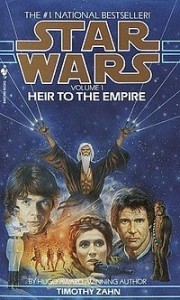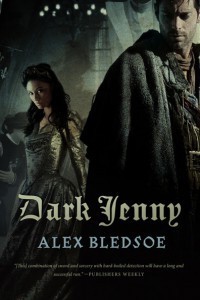The Secrets of Writing Action Scenes
 Back in 1991, Timothy Zahn rejuvenated the Star Wars franchise with Heir to the Empire, the first new, non-comic Star Wars tale since the end of the first trilogy. Like every SW fan, I devoured it, but I remember thinking that although Zahn nailed the characters, he totally blew the battle scenes. The reason was simple: what takes seconds to show in film can take pages to describe in prose. By trying to replicate the action of the movies, he created those vast blocks of gray text that readers skim, violating one of Elmore Leonard’s prime rules: “Try to leave out the part that readers tend to skip.”
Back in 1991, Timothy Zahn rejuvenated the Star Wars franchise with Heir to the Empire, the first new, non-comic Star Wars tale since the end of the first trilogy. Like every SW fan, I devoured it, but I remember thinking that although Zahn nailed the characters, he totally blew the battle scenes. The reason was simple: what takes seconds to show in film can take pages to describe in prose. By trying to replicate the action of the movies, he created those vast blocks of gray text that readers skim, violating one of Elmore Leonard’s prime rules: “Try to leave out the part that readers tend to skip.”
When I began to write the Eddie LaCrosse novels, I remembered how I’d felt about Zahn’s action scenes, and so thought about how I wanted to do mine. It took a while, but I finally realized the obvious thing about action scenes in prose: they have the same job as everything else. They have to advance the plot, and reveal character. If they don’t do at least one of these things, then they’re extraneous at best, boring at worst. And readers will skip them.
There’s a lot of action–fights, chases, even occasionally battles–in the Eddie LaCrosse novels. The point of view helps a lot: everything is in first-person, so there’s no question of what perspective to emphasize. If Eddie doesn’t experience it, it doesn’t get mentioned.
But Eddie is also a very specific character. He’s experienced, but he’s a bit past his prime, and he tends to either win his fights very quickly, or choose not to fight at all if he thinks he’s overmatched. Because he’s seen so much, he often compares his current fight with something from his past, often employing techniques that worked before. When I write an action scene, I have to keep all this in mind.
Further, there are the physical sensations of the fight. The muscles used to swing a sword, or to parry a blow, are specific and, to most of us, a bit unusual. I’ve taken fencing and sword-fighting classes to get an idea of how it feels, and yes, at times I act out what I’m about to write to see if there’s some interesting detail I might have overlooked. Luckily my office is on the third floor, so the neighbors don’t have to see me jumping around.
It’s also important to remember that things we might see in TV and the movies don’t always go that way in real life. For example, in Dark Jenny, Eddie punches somebody in anger, and it messes up his hand for the rest of the book. This was inspired by the incident of director Howard Hawks punching Ernest Hemingway: “I hit Hemingway, and I broke the whole back of my hand.” (Joseph McBride, Hawks on Hawks, p. 37.) My own experience with punches is thankfully limited to adolescence, but I do remember that it hurt, something that you don’t see or read about in most fight scenes.*
A personal peeve of mine is the idea that someone can be harmlessly “knocked out,” often more than once, with no long-term consequences. A quick pop to the head and that’s it; you wake up later, perhaps with a bit of a headache but otherwise none the worse for wear. That is, frankly, bullshit. As the recent NFL controversy has shown, repeated blows to the head accrue damage over time; just look at Muhammed Ali these days, for another example. If your hero gets clocked more than once, you need to think about what that means beyond a simple plot point. As an example, in Burn Me Deadly, Eddie is beaten up and knocked out at the start of the book, and spends a fair bit of time recovering.
So those are some aspects of my approach to writing action scenes. What action scenes do you like, and which ones ring false? And thanks to @INCspotlight for suggesting this topic on Twitter.
*the only other time I recall seeing this in a movie was in the original M*A*S*H, when Trapper John (Elliot Gould) hits Frank Burns (Robert Duvall) and clearly hurts his hand.




